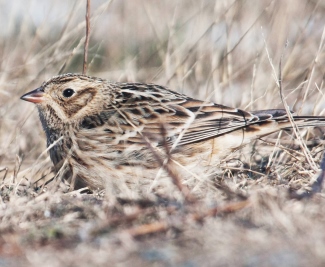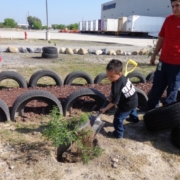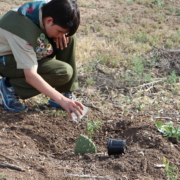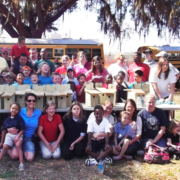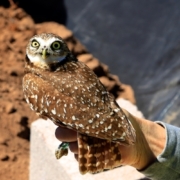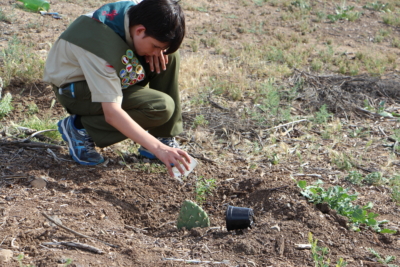WIN Waste | Ensuring a Home for Migratory Birds
En Español
Located on an upland island off the coast of Massachusetts and surrounded by the 1,300-acre Rumney Marsh Area of Critical Environmental Concern, the Wheelabrator Saugus Inc. Bear Creek Wildlife Sanctuary provides 340 acres of upland and intertidal habitat for migratory birds and a variety of other wildlife.
This program serves as a model of how active operations and a wildlife sanctuary can easily co-exist without conflict, and indeed, to the benefit of both wildlife and business needs.
The Wheelabrator team members who manage the Sanctuary’s habitats are primarily focused on providing quality habitat for migratory birds, particularly the 24 rare specialized species in the area that are suffering the most from habitat loss. The team’s active management of the site’s 9 different habitat types maintains the signature tones and textural features that birds use to identify stopover habitat from high in the air during their migratory journey along the Atlantic Flyway. These efforts have been so successful that as of 2016, employees and community volunteers have documented 178 bird species at the Sanctuary, including 15 of the 24 specialized bird species and several vagrant species that arrived by accident, likely as a result of being blown off-course during migration by a storm. Without active management, these bird species would not be enticed to come and stay at the Sanctuary.
Along with migratory birds, the team also maintains a number of other projects to manage the 9 habitats in an integrated manner, including control of several invasive and nuisance species. These efforts to benefit wildlife began in the mid-1990s with construction of the various upland habitats as part of the post-closure reuse plan for an older landfill.
Wheelabrator’s conservation efforts are not limited to the Sanctuary. The Bear Creek facility also includes an energy-from-waste plant and an ash monofill. This program serves as a model of how active operations and a wildlife sanctuary can easily co-exist without conflict, and indeed, to the benefit of both wildlife and business needs. The team attributes much of their success to regular meetings between the various operating units on-site, which have been held since the mid-90s when construction of the habitats began. Collaborating has helped to enhance understanding of each group’s needs and overcome various facility limitations or misconceptions, which in turn helps promote harmony between habitat and wildlife management efforts and facility operations. Frequent communication through these meetings also allows the team to identify opportunities, such as the potential for reforestation when a portion of the property will become inactive for the long-term.
Community volunteers, who visit the site for bird walks and tours, make a significant contribution to the achievements of the program. The core group of birders who regularly attend the walks and tours provide invaluable assistance in identifying birds and documenting these observations on Cornell University’s eBird.org. These dedicated birders also serve as unofficial ambassadors for the program, sharing the program’s achievements with other members of the community.
The Bear Creek Wildlife Sanctuary serves as a model of success for any program wishing to balance habitat management with business needs. By maintaining active management of the site’s habitats and working closely with both the site’s operational staff and a core group of community volunteers, the team ensures that migratory birds can continue to find quality habitat on site for the long term.
Related Content
- Blogs:
- Webinars:
- Project Guidances:
Quick Facts
| Site Name: | Bear Creek Wildlife Sanctuary |
|---|---|
| Category: | Member Spotlight |
| Tags: | avian, Awareness and Community Engagement, Education & Awareness, grasslands, habitat, Species Management |
| Site Location: | Saugus, Massachusetts |
| Partners: | Ballard Early Childhood Center, Falcone Environmental Services, Massachusetts Audubon Society, North Shore Community College, Northeast Wetland Restoration, Saugus School District |
| Certification Since: | 2008 |
| WHC Index Link: | Learn more about the program |
